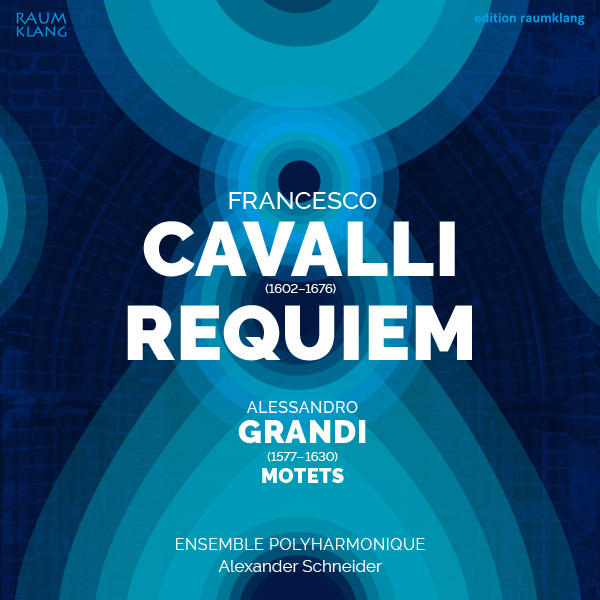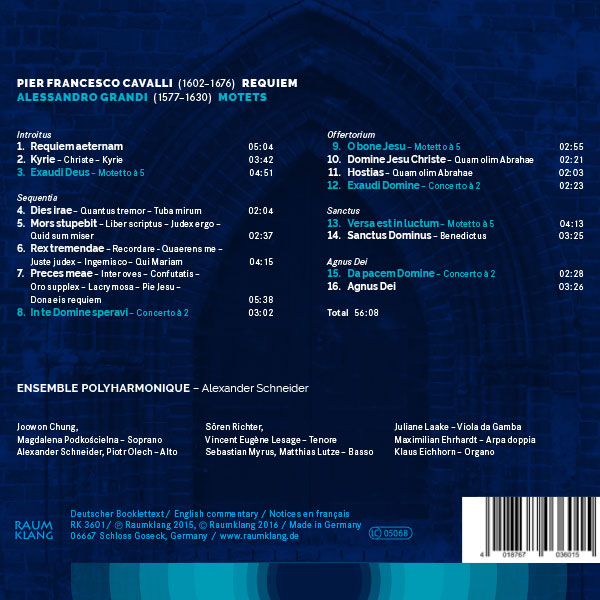VENETIA DOLENS
Easy to say: a composer’s death is a semicolon in musical history, or is at least a pause for breath, a visible imprint in our collective memory in harmony with Plato’s likeness of memory to a wax tablet.Perhaps it is said too frequently, but with Francesco Cavalli we really do reach a point of repose. With the death of Pier Francesco Caletti-Bruni (his real name, Cavalli being but a “nom de plume”) on the 14th January 1676 an artist, who had established himself as much as any other at the forefront of contemporary composition, bade farewell.
A man, famous throughout Europe whose compositions, both sacred and secular, enjoyed great success.A composer who set to music the whole spectrum of human passions and vicissitudes, who with the most modest means achieves extraordinary effects and with whose abundantly variegated forms, ranging from recitativo secco to full-blown arias a panoply of possibilities was displayed, unique in the history of opera.
When Venetian Opera was at its acme in mid17th century Cavalli represented one of the chief attractions of the operatic season, a composer whose breathtaking productivity dazzled, even in the hive of activity which was then the luxurious lagoon city.His works pointed the way for the as yet young and unestablished form of opera.Whereas only three operas by Cladio Montiverdi have come down to us, we possess almost thirty by Cavalli. His Giasone from 1649 was one of the most successful operas of the 17th century altogether.One of the high points in Cavalli’s life was the invitation by the French court, on the occasion of the Louis XIV’s wedding festivities in 1660.
Two operas by Cavalli, Xerse and L’Ercole Amante, were performed in the great “Galerie” of the Palais de Louvre and in the Tuileries respectively, the latter with inclusions for ballet by a certain Jean-Baptiste Lully, who was to go on to become one of Europe’s most influential composers.Unfortunately these ventures were not smiled on by the gods. Dissapointed and perhaps even a little embittered by inauspicious circumstances and by the anti-Italian machinations of his French homologues which caused L’Ercole Amante to “flop”, Cavalli returned to Venice in 1662, where he would henceforward dedicate himself more to sacred compositions.
What happened to him now can best be described as a religious turning point after which he would turn his focus inwards. This reaction is well known by those who have undergone life-changing traumas. In this way, and to a great extent psychologically sensibilised, Cavalli’s later church music can be seen as an attempt to digest and invest with higher meaning that which had “thrown him”, in spite of much initial worldly success. Hardly surprising in this context were his efforts to dictate exactly how he wished his own funeral to be conducted. This was a return to the spiritual and religious foundation on which his life as a child and adolescent had been founded.
Cavalli’s sacred compositions comprise two concert-style Masses, an Oratorio, three cycles of Vespers, five settings of the Magnificat, more than two dozen other liturgical compositions and finally the Missa pro defunctis per octo vocibus, composed presumably between 1673 and 1675 but unpublished in Cavalli’s lifetime. In this, his last work, his “opus ultimum” Cavalli turns to the roots of his oeuvre and bequeathes to us a vision of the music which had indented itself on his soul whilst still very young.It displays a view of his years in the choir of San Marco cathedral in Venice under the Aegide of Monteverdi and Alessandro Grandi (1618 maestro del canto, later assistant conductor) where Cavalli began his formidable musical career.As a singer, organist and from 1688 as maestro di capella he had a life-long connection with the cathedral of San Marco in Venice.
Perceiving his own life to be nearing its end, Cavalli wrote this Requiem for his own demise. In his will he left precise instructions for the organist.(Hereby, a sort of early baroque “Gesamtkunstwerk” was created, comparable to the plan by Heinrich Posthumus Reuss, in which a central place is taken by Heinrich Schütz’s “Musikalischen Exequien”). Cavalli required for this an opulent orchestration : the San Marco singers in total, 2 violins, 4 violas, 2 cornettos, 2 theorboes, trombones, a dulzian, a violone and no less than 3 organs!
He also ordained that the work should be performed twice yearly in his memory. Looking in from the outside it would seem that the work was intended to impress, as a sort of musical memorial. But in its inner core can be discerned both the piety and the loneliness of a man whose wife had predeceased him and whose marriage was without issue, i.e. had remained childless.
This Mass for the dead, composed in the so-called “stilo antico” was not intended for Cavalli’s contemporaries, but is aiming for eternity.
Enriched by his multifarious experiences Cavalli is primarily concerned with allowing the text to irradiate the whole work.
His refined theological and philosophical innovations enable past, present and future to be summed up simultaneously. His music draws us into the early baroque, makes use of elements of the high baroque style and even points towards the style known in German as “Empfindsamkeit”.A perpetually Palestrina- inspired imitative style alternates continuously with passages of declamatory, homophony, a sort of musical genuflection to the Venetian double choir style of Giovanni Gabrieli. The harmony and the solemn pace are reminiscent of the style of Tomas Luis de Victoria’s “Officium Defunctorum”.
One unusual particular of the Missa pro defunctis is the Dies Irae, which inimitably unites a terrifying vision of the last judgement with the believer’s hope for salvation.The ruling eight-part texture is skilfully placed in stark contrast with intimate two or three-part passages.
There are references to Monteverdi’s Madrigali Guerrieri with telling onomatopoeia. Musical figures illustrating both “martelli” (hammers) and “aqua” (water) are discernible in such phrases as “dies irae” and “cum resurget”. On hearing the sections “voca me” and “lacrymosa” one could be forgiven for thinking that Mozart must have known this music. One novelty is that the usual Gregorian chant elements are very largely noticeable by their absence. Only in the Introit in the verse “te decet” and in the “agnus dei” are the traditional chants, whether in unison or clothed in harmony, to be heard.
The ensemble polyharmonique wishes to show the quintessence of this music by employing a solo cast of only eight singers and basso continuo. Cavalli’s introspective yearning is highlighted by the use of postmodern digital means. In an era where a live performance in a liturgical context has become an absolute exception, our CD springs into the breach and serves to refresh our collective memories with the wonders of the past.Our programme combines motets seathing with emotion and the more intimate “spiritual concerts” of Alessandro Grandi juxtaposed with a setting of the Requiem text with all his very personal perceptions by Francesco Cavalli. We are invited to participate in 17th century spiritual attitudes which fascinate us to this very day, tinged as they are by Renaissance Humanism, the awareness of the impermanence of life and the belief that at death we will transcend to a better life.
This picture of life, in which the idea of an ungraspable higher order of things ordains our existence, gives this music the utmost value and provides us with our most urgently needed life’s companion.
Alexander Schneider – Prof. Jonathan Alder (Rendering into the English tongue)


